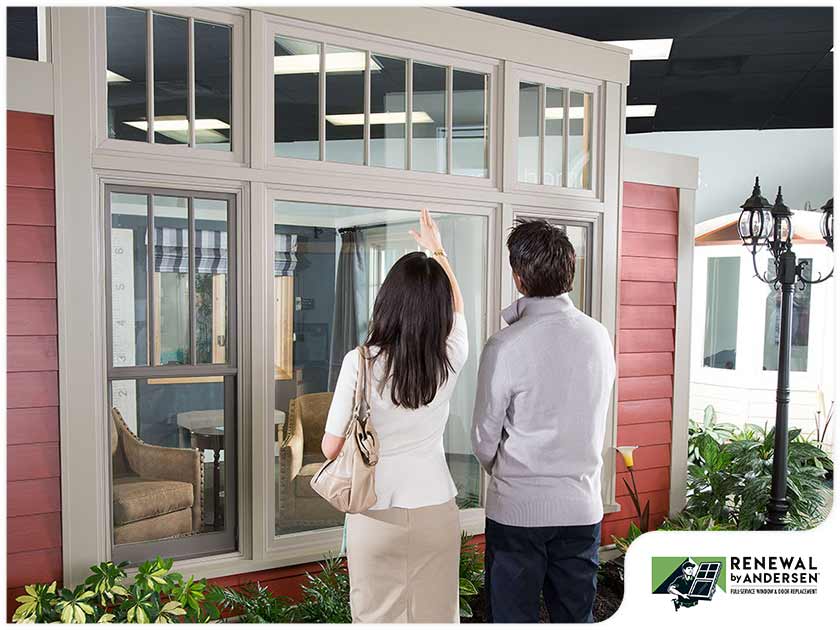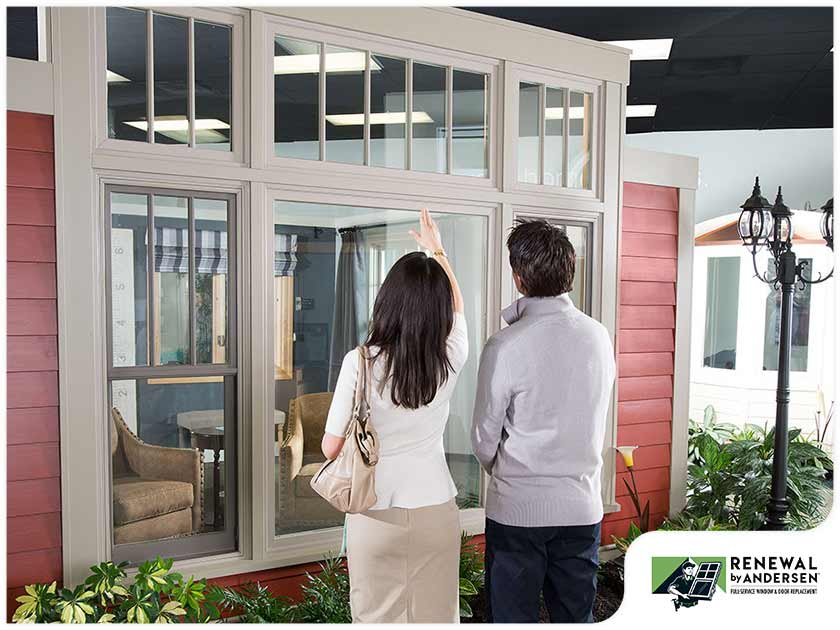

In a modern-day home, high-performance, energy-efficient windows are some of the most crucial elements that you need to get right. While you know exactly what style of window you want for the living areas in your home, selecting the most energy-efficient windows that fit your needs and budget can be a bit challenging.

When in the market for replacement windows, it is important to be aware of the various components of a top-quality, energy-saving window. To guide you, we answer commonly asked questions about windows and energy efficiency.
The term “insulated glass” is a bit of a misnomer — it is actually made of two or more panes of glass separated by insulation at the edges. Between the panes is an inert gas, such as argon or krypton, that slows down the transfer of heat through the window. An inert gas is used because it is odorless, colorless and non-toxic. If the window seal has failed, residents would not have to worry about inhaling hazardous gas. Gas fills also insulate a lot better than air and do not contain moisture that can condense on the inside of the glass units.
Low-emissivity (low-E) glass is designed to minimize the amount of ultraviolet (UV) and infrared light that enters through the glass without minimizing the amount of daylight that flows into your home. Low-E glass has a microscopically thin, transparent coating that reflects heat that can cause damage to interior furnishings. If you live in a region that experiences scorching temperatures during the summer, choose soft-coat low-E glass casement windows for high-performing solar control. On the other hand, if you live in an extremely cold climate, the hard-coat low-E glass may be a better choice. It allows the glass to reflect interior heat back inside.
At Renewal by Andersen®, we offer a variety of energy-efficient glass options, including the High Performance™ Low-E4® glass. It is 70% more energy-efficient than a standard double-pane window in the warmer months and 45% more energy-efficient in the colder months.
The National Fenestration Rating Council® is a non-profit organization that administers energy performance ratings and other useful information about windows, skylights and doors. The organization communicates the energy performance of a product using the NRFC label to help consumers compare energy-efficient products, including casement windows. The label includes the U-factor, which measures how well a product keeps heat inside a room; solar heat gain coefficient (SHGC), which measures how well a product resists unwanted heat gain; visible transmittance, which measures the fraction of the visible spectrum of sunlight that is transmitted through the glazing; and air leakage, which measures how much air enters a room through a product.
U-value, also known as U-factor, is a measure of heat transfer through glass. Essentially, it measures how well a window prevents heat from escaping a home. The lower the U-value is, the better the unit is at reducing heat gain or heat loss. In colder climates, the U-factor performance plays an influential role in affecting energy efficiency during the heating season. Meanwhile, R-value measures a specific material’s resistance to heat flow. It is particularly important in the rating of insulation used in attics. The greater the R-value, the better insulation and resistance to heat transference it offers.
ENERGY STAR® is a government-backed symbol for energy efficiency. The certification makes it easier for consumers to identify energy-efficient windows, doors and skylights that offer substantial savings on energy costs. Today, manufacturers use an array of technologies to create ENERGY STAR-qualified products. For example, many ENERGY STAR-certified window replacement units have quality framing materials, multiple panes of glass, low-E glass, gas fills and warm edge spacers. Doors, on the other hand, are considered energy-efficient if they have double- or triple-pane insulating glass, improved core materials and improved weatherstripping to reduce air leakage around the edges. Some of these technologies are even more valuable for skylights because they receive direct sunlight and extreme temperatures year-round.
A surefire way to increase your energy savings is to select specific windows for different parts of your home. For example, north-facing windows in cold climates should have the lowest U-factor. South-facing windows should have the highest solar heat gain coefficient in cold climates and low solar heat gain coefficient in warm climates. In both cold and warm climates, windows on the east and west sides of the home should have low solar heat gain coefficient.
According to ENERGY STAR, if you are planning to upgrade to ENERGY STAR-certified products, then you will be eligible for a tax credit of 10% of the cost of the home improvement. A maximum of $200 can be claimed for skylight and window replacement. You do not have to replace the windows in your home all at once to qualify for the credit, but the products must be installed in your primary residence.
Sure, energy savings are stellar benefits you can get from energy-efficient windows, but these products offer so much more. A great selling point is their low maintenance features. Since there is less condensation on these windows, you will not have to worry about having to regularly remove traces of mildew. Energy-efficient windows are also able to keep your home comfortable day and night because they are excellent at regulating indoor temperature.
When it comes to installing strong and energy-efficient replacement doors and windows, Renewal by Andersen of Nashville is the contractor to trust. Your new and improved home is waiting for you, and our skilled team is ready to provide the industry-leading products and top-notch customer service. Schedule a consultation or get a no-obligation quote by calling (866) 609-5033. You can also fill out our online form. We work with homeowners in Clarksville, TN, and the surrounding areas.